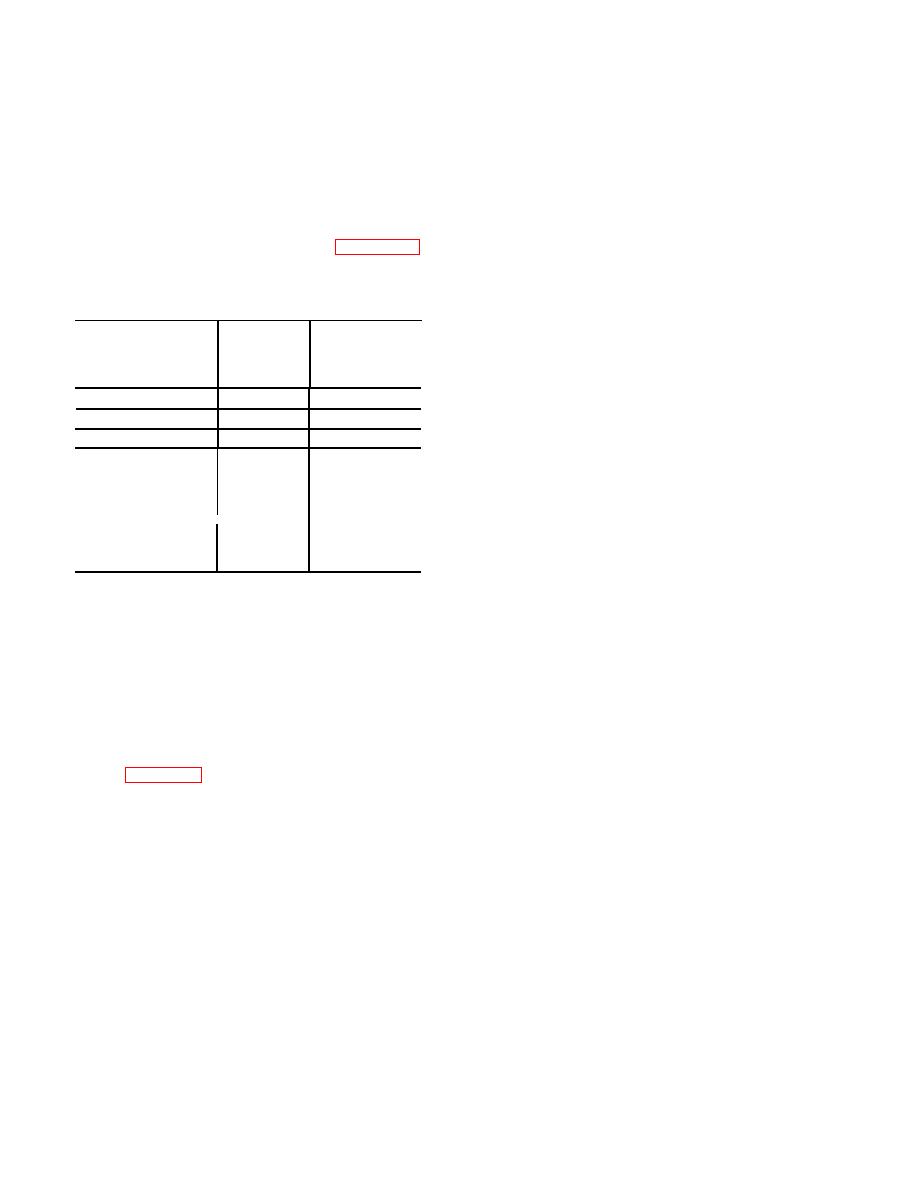 |
|||
|
|
|||
|
|
|||
| ||||||||||
|
|  networks as shown in the following chart.
panel c o n t r o 1 s of the impulse
generator are set so that the meter
After the meter has been calibrated by the
indicates the same amplitude as
use of the self-contained calibrating signal,
t h e impulse generator is disabled and the
t h a t produced by the incoming rf
i n c o m i n g rf Signal is applied to the re-
signal.
c e i v e r . T h e meter pointer deflection is
(4) The value of the incoming rf signal
read d i r e c t 1 y, taking into account the
i s read from the settings of the
setting of the SIGNAL ATTENUATOR DB
i m p u l s e generator coarse and fine
control. For precise measurements, the
output front -panel controls.
l o s s in the 30-foot length of rf cable is
a d d e d to the meter indication. Figures 1
7. Introduction to Unit Theory
and 2 show the signal paths for this method
The signal flow and basic functioning of
of measurement, `when the shunt method of
the test set in the shunt and series methods
c a l i b r a t i o n is used.
of calibration have been discussed in this
section. The following sections cover a de-
Full-scale meter
Full-scale meter
indication (in
tailed analysis of the test set on a unit-by
Indication (in
SIGNAL ATTENUATOR DB
microvolts unless
db above 1
control
setting
otherwise indi-
u n i t description.
microvolt)
cated)
a. Section II analyzes the circuits housed
40
60
1,000
in the main unit, which consists of rf out-
60
80
10,000
p u t switching and attenuation, metering,
80
100
100,000
audio amplification, and power supply.
80 (plus the inser-
140
10 volts
b. S e c t i o n I I I d e s c r i b e s t h e d e t a i l e d
tion of Fixed
f u n c t i o n i n g of tuning unit 1. This unit
Attenuator CN-
h o u s e s a six-position turret tuner and rf
7 2 1 / U R M - 4 5 be-
tween the rf
c i r c u i t , i f . input, attenuation, o u t p u t
cable and the
s w i t c h i n g circuits, two separate if. ampli-
SIGNAL INPUT
f i e r subassemblies (one tuned to 455 kc;
jack).
t h e other tuned to 1,600 kc), and the de-
tector-electrometer assembly.
b . Substitution Method. A second basic
c. Section IV presents a description of
method of operating the test set is through
the circuits housed in tuning unit 2. These
t h e substitution method of measurement.
are a two-band rf section whose resonance
This technique is used when the loop, verti-
to incoming rf signals is varied by chang-
cal, or discone antenna is the signal pickup
i n g the setting of an i n d u c t u n e r c i r c u i t ,
d e v i c e for broadband (noise) signals. In
a three-step if. attenuator, a single if.
this method of procedure, the known ampli-
a m p l i f i e r subassembly (operating at 10.7-
t u d e output of the impulse generator is
mc center frequency), and a detector-
substituted for the previously unknown
e l e c t r o m e t e r assembly which is identical
a m p l i t u d e of the signal under measure-
in all four tuning units.
m e n t . Figure 3 shows the signal path for
d. Section V follows the detailed signal
t h i s method of measurement, when using
path in tuning unit 3. This unit covers its
the series method of calibrating the meter;
complete frequency spectrum in one band,
E s s e n t i a l l y , this method reverses the se-
u s i n g an rf tuner whose resonance to in-
quence of operations described in a above
coming rf signals is varied by gear-driving
in the following manner:
a three-section air-dielectric capacitor.
(1) T h e incoming rf signal is applied
The if. signal path consists of an if. pre-
to the receiver without initially
a m p l i f i e r housed in one subassembly, a
c a l i b r a t i n g the meter. The meter
t h r e e - s t e p if. attenuator housed in another
p o i n t e r deflection and the setting
subassembly, and a main if. amplifier
of the SIGNAL ATTENUATOR DB
housed in a third subassembly. Both the if.
c o n t r o l are noted.
p r e a m p l i f i e r and main amplifier operate
(2) The incoming rf signal is disabled.
a t a center frequency of 42 mc. T h e
(3) T h e coarse and fine output front-
10
|
|
Privacy Statement - Press Release - Copyright Information. - Contact Us |